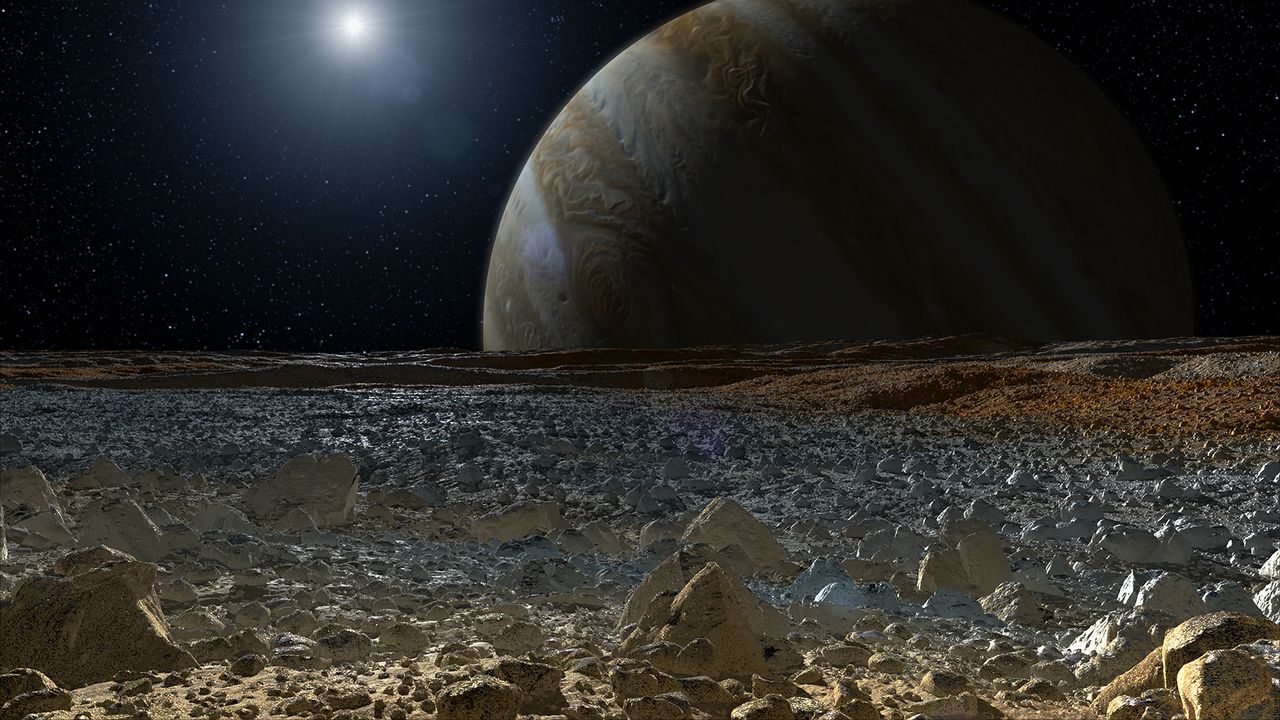New observations from the James Webb Space Telescope (JWST) have transformed our understanding of Jupiter’s moon Europa, revealing a complex and active environment beneath its icy surface. For years, scientists viewed Europa’s frozen exterior as a static shell, but recent data indicates a dynamic world with significant geological activity.
In a statement, Richard Cartwright, a spectroscopist at Johns Hopkins University‘s Applied Physics Laboratory and lead author of the study, explained, “We think that the surface is fairly porous and warm enough in some areas to allow the ice to recrystallize rapidly.” This discovery suggests that Europa’s surface is not merely a frozen landscape but a vibrant setting where ongoing processes affect its icy crust.
### Insights into Europa’s Subsurface Ocean
The study specifically examined two regions in Europa’s southern hemisphere: Tara Regio and Powys Regio. Tara Regio emerged as particularly noteworthy, as JWST observations detected crystalline ice both at the surface and deeper below. This challenges previous assumptions about how ice is distributed across the moon.
By analyzing the spectral properties of these “chaos terrains”—areas where blocks of ice appear to have broken apart, drifted, and refrozen—scientists gained insights into the moon’s chemistry and potential for habitability. The findings were published on May 28, 2023, in The Planetary Science Journal.
According to Ujjwal Raut, program manager at the Southwest Research Institute and co-author of the study, “Our data showed strong indications that what we are seeing must be sourced from the interior, perhaps from a subsurface ocean nearly 20 miles (30 kilometers) beneath Europa’s thick icy shell.”
### Unique Chemical Signatures Detected
The research team conducted laboratory experiments to understand how water freezes on Europa, where the surface is subjected to intense bombardment by charged particles from space. Unlike Earth, which primarily forms hexagonal crystal structures in ice, the radiation on Europa disrupts these formations, resulting in amorphous ice—a disordered form of ice.
Raut noted that these findings, combined with the fresh data from JWST, contribute to the growing evidence that a vast, hidden liquid ocean exists beneath Europa’s icy exterior. “In this same region, […] we see a lot of other unusual things, including the best evidence for sodium chloride, like table salt, probably originating from its interior ocean,” Cartwright stated.
The team found elevated levels of carbon dioxide in the chaos regions, indicating that these deposits likely stem from the subsurface ocean rather than external sources such as meteorites. This is significant because the instability of carbon dioxide under Europa’s radiation suggests these materials are relatively recent and linked to geological activity.
### An Ongoing Journey of Discovery
The presence of a carbon-13 isotope raises further questions about its origin. Cartwright remarked, “Where is this 13CO2 coming from? It’s hard to explain, but every road leads back to an internal origin.” This observation aligns with other hypotheses regarding the origin of 12CO2 detected in Tara Regio.
These findings come as NASA’s Europa Clipper mission is on its way to the moon, with an expected arrival in April 2030. The spacecraft will conduct numerous flybys, gathering critical data to deepen our understanding of the ocean hidden beneath Europa’s icy crust.
As research continues, the implications of these discoveries could reshape our understanding of Europa and its potential for hosting life. The dynamic characteristics revealed under the ice underscore the importance of ongoing exploration of this enigmatic moon.





































































